How far to plant potatoes?

There are several common potato planting patterns. Naturally, each of these options has certain features, as well as advantages and disadvantages. However, in any case, you should know at what optimal distance to plant potatoes, what to maintain the spacing between the tubers and what is the row spacing. This is due to the need for the correct formation of the planting, including sowing the crop so that the bushes do not shade each other.


As practice shows, in order to obtain a rich and high-quality harvest, it is necessary to strictly observe the planting schemes.
Distance between rows
Initially, it is important to note that the described agrotechnical work begins after the soil warms up 10 cm deep to a temperature of at least +8 degrees. Such conditions in dry and warm enough weather develop most often in May, but here it all depends on the climate. And also experienced vegetable growers believe that well-sprouted tubers are transferred to the beds a little earlier.
If possible, try to plant potatoes on the most flat areas after plowing or digging. However, there may be exceptions given the condition of the soil. So, if we are talking about waterlogged or heavy soil, then landing on the ridges may be the best solution. This approach, while observing certain gaps between the plants, allows the earth to warm up faster and, at the same time, improves aeration.

The initial stage of planting potatoes in the garden or summer cottage will be to determine the parameters of the row spacing. This must be done correctly when choosing any scheme, including the square-socket method. The algorithm includes the following key steps.
-
Mark out the entire area planned for potatoes using a marker, which is used as a shovel or ordinary stick. With their help, furrows are outlined for subsequent planting.
-
Pull the cord between the two pegs on the first groove. By the way, it is possible to plant tubers under this cord, but in practice this often significantly slows down the process.
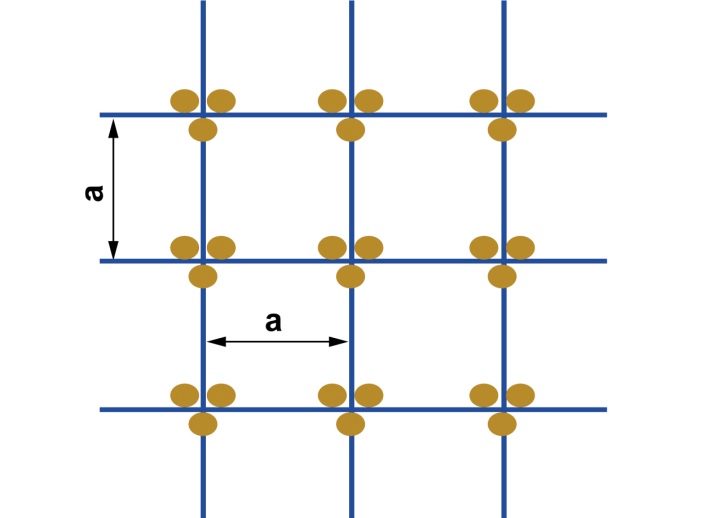
The distances between the rows directly depend on the features of the scheme used. So, if the method of planting on the ridges is chosen, when forming the beds, it should be taken into account that 2 rows are placed on each of them. In such situations, the interval between them will be from 10 to 26 cm.
It is important to take into account that the next pair of rows is separated by a ditch the width of a shovel, with sloping walls.
It is worth remembering that the described parameter also depends on the varietal properties of the potato. This approach is due to the fact that, for example, early plants are distinguished by the formation of tops of a small density, and therefore they can be placed in the ground with a greater frequency. So, the ideal intervals between adjacent rows of early-ripening potatoes are from 60 to 75 cm.If we are talking about later varieties, then they are planted with an interval of 70 to 90 cm.By the way, some experienced farmers argue that the simultaneous planting of two varieties in compliance with the rules concerning the size, has a positive effect on the yield.
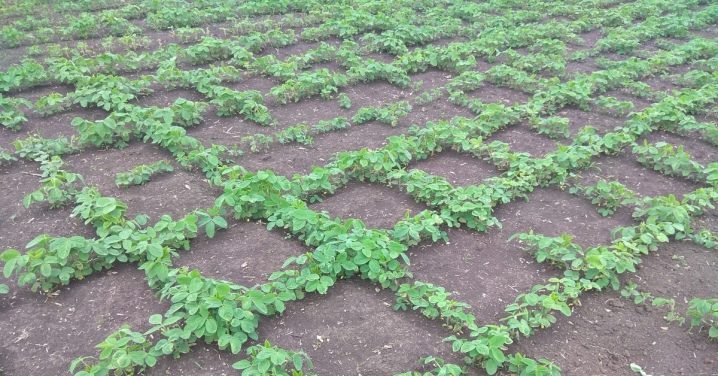
Planting "in a row" is most often done according to the 30x80 scheme, again, adjusted for a specific type of plant. The rows themselves should, if possible, be oriented from north to south. But in practice, most of the parameters of potato beds, among other things, are determined by the characteristics of the site.
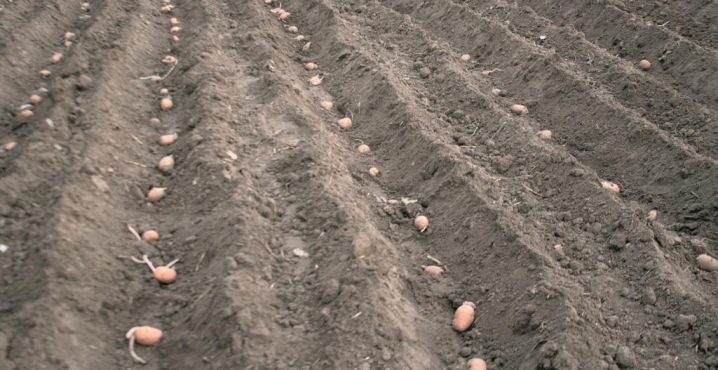
How many centimeters should there be between the bushes?
Many sources now indicate that an average of 6 potato bushes should be planted per square meter of land. If we take this approach as a basis, then with a row spacing of 70 cm, the interval between tubers should be about 26 cm. In practice, of course, no one runs around the beds with a ruler, marking places for holes. The distance shown is approximately 1.5 times the width of a conventional bayonet shovel. However, it is worth considering that when using such a planting scheme, the bushes will be located quite tightly.

Much more often, gardeners prefer to use potato planting systems, which provide for almost twice the gap between the tubers. Often this parameter is determined by dividing the total weight of the planting material by the area allotted for culture. By the way, this way you can get data on the potential yield. Often, the distance between the holes, taking into account a number of conditions, is made up to one meter.
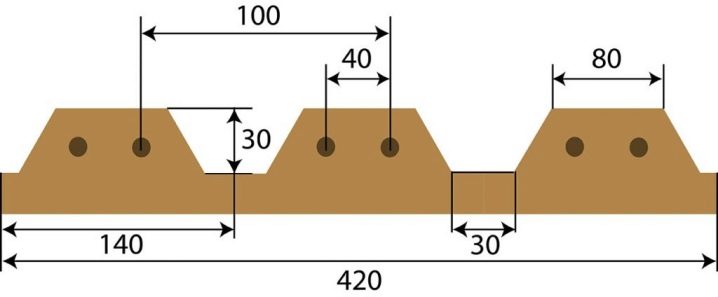
One of the determining factors, as in the situation with the row spacing, will be the varietal characteristics of potatoes, namely:
-
for early species - from 25 to 30 cm;
-
for medium and late - from 30 to 35 cm.
But it is important to remember that these distances are relevant only for tubers with standard sizes (chicken egg). If the planting material is small, then the intervals are reduced to 18-20 cm.For larger specimens, they are increased to 40-45 cm.
Landing patterns in different ways
When choosing one or another method of planting potatoes, it is important to remember that the proposed sizes and placement of the beds are not a dogma. As a rule, each gardener independently determines what distance between rows and nests is best, taking into account:
-
climatic features of the region;
-
type of soil;
-
planted variety;
-
ease of work;
-
configuration and dimensions of the site.
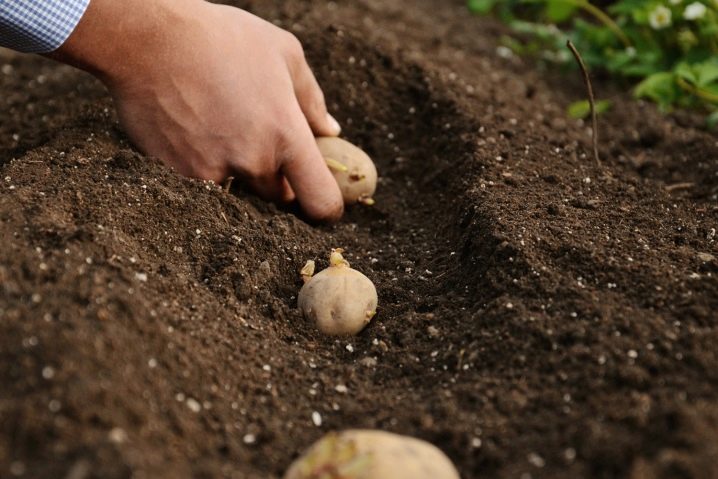
Regardless of which schema is used, the first step is markup. Do it with pegs and cords. By the way, it is convenient when the height of the latter is equal to the width of the row spacings. This will greatly simplify the whole procedure and speed up the marking of future beds.
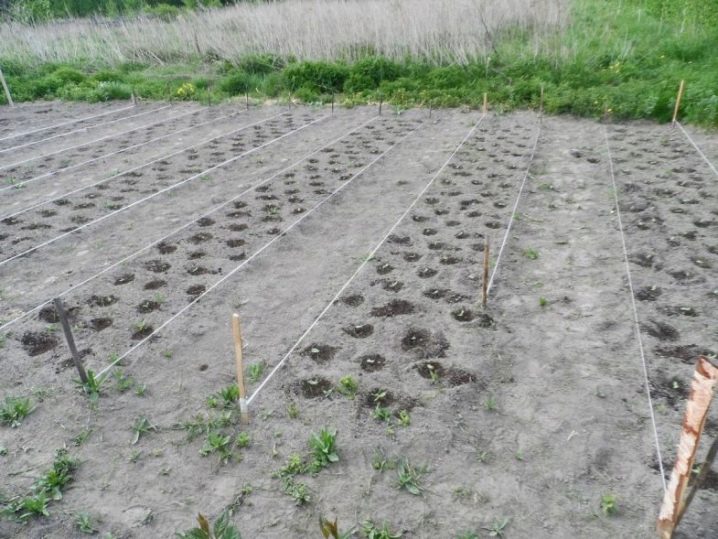
Manually under a shovel
In this case, we are talking about the simplest and most proven method for decades. The algorithm of actions here is well known to almost every gardener and includes the following points.
-
Immediately before planting tubers in the ground it is dug up and fertilized.
-
With the help of pegs, they mark the boundaries of the future garden... These parameters are directly determined by the size of the site itself, as well as the volume of planting material.
-
Dig holes with a shovel at intervals of about 30 cm. Using an appropriate marker will greatly simplify your work. Each previous hole during planting potatoes is covered with earth from the next.
-
A second bed is planned at a distance of 70 cm from the first. If early potato varieties are planted in relatively small areas, then this interval can be reduced to 60 cm. It is important to remember here that one of the obligatory agrotechnical measures is hilling bushes, for which soil is used from row spacings. If they are not wide enough, then the risk of damage to the rhizomes increases.
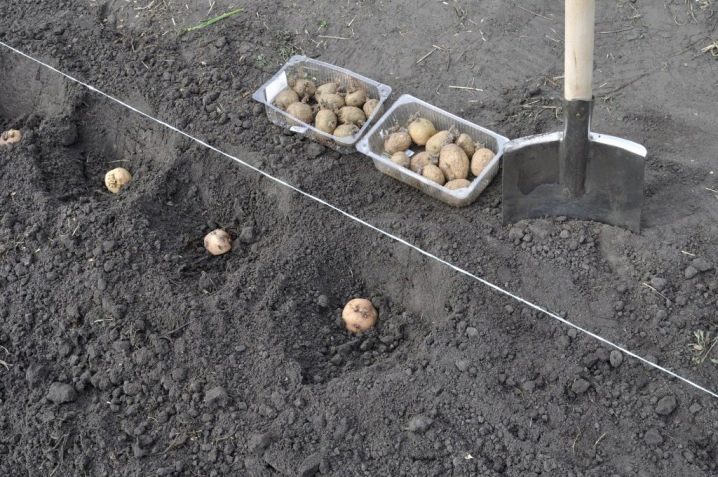
It is important to remember that the gaps between tubers and, therefore, bushes directly depend on the varietal characteristics of the potato. So, if we are talking about planting early varieties, which are characterized by not too thick tops, then 25 cm will be quite enough.In situations with late types of culture, this parameter increases to 30-35 cm. For beginner gardeners who do not know the characteristics of the variety, the density of the tops will help determine the number of shoots on the tubers. And the more there are, the further apart it is necessary to arrange future bushes.
When talking about the distance between rows and tubers, it is important to remember about the need for full lighting of the plants. The key to a plentiful and high-quality harvest is intensive photosynthesis. And therefore, one bush should not shade another. An exception would be planting potatoes not with tubers, but with single eyes (shoots). In such cases, the holes are made with an indent of 20-25 cm, and their depth depends on the density of the soil.
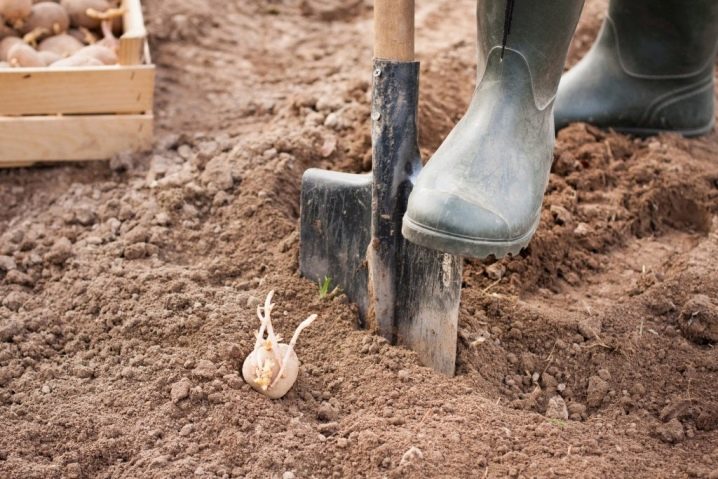
Despite the simplicity, this method of planting potato tubers has one important drawback. With this scheme, in the event of heavy rainfall, the developing plant may simply suffocate.
Into the ridges
This method has established itself as the most suitable for regions with heavy rainfall. The scheme provides for the location of tubers above the surface of the site. Due to this, moisture after precipitation is in the aisle, which means it cannot harm the plants. As many years of practice have shown, this method allows you to completely secure the future potato crop, even on clay soils.
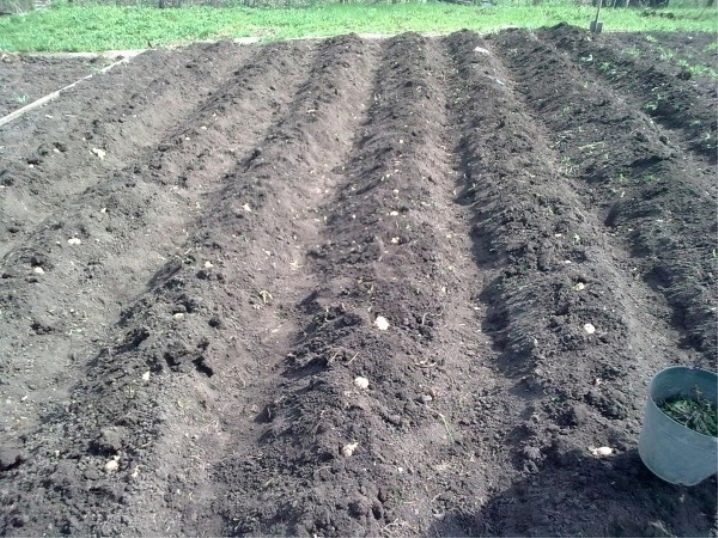
Algorithm of actions.
-
The ridges themselves are formed (literally cut with a plow). The gaps are defined here as when planting potatoes in the classical way. These formations reach a height of about 15 cm.
-
Holes up to 6 cm deep are formed on the surface, which should be spaced 30 cm apart.
-
Planting material is placed in the holes and buried.
The main disadvantage of this method is due to the type of soil. If we mean sandstone or sandy loam soils, then the beds (ridges) will dry out quite quickly. To avoid problems, you will have to water the plantings more often. And here, too, the considered parameters should be adjusted.
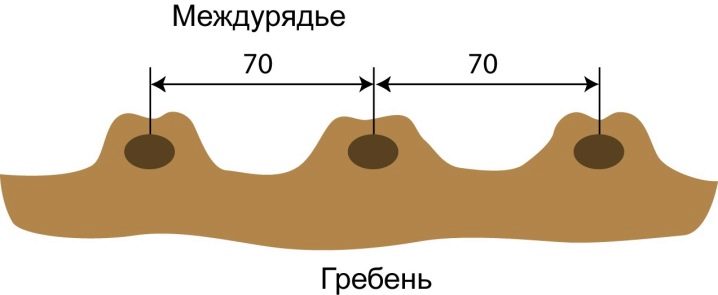
In the trenches
As a rule, in arid regions, the key to a good potato harvest will be the use of this particular method of planting tubers in open ground. It provides for the digging in the autumn of furrows up to 30 cm deep, into which organic matter fits. The intervals in this case are 0.7 meters. Already before planting, these furrows will be about 6 cm deep due to the fact that fertilizers will sink in them.
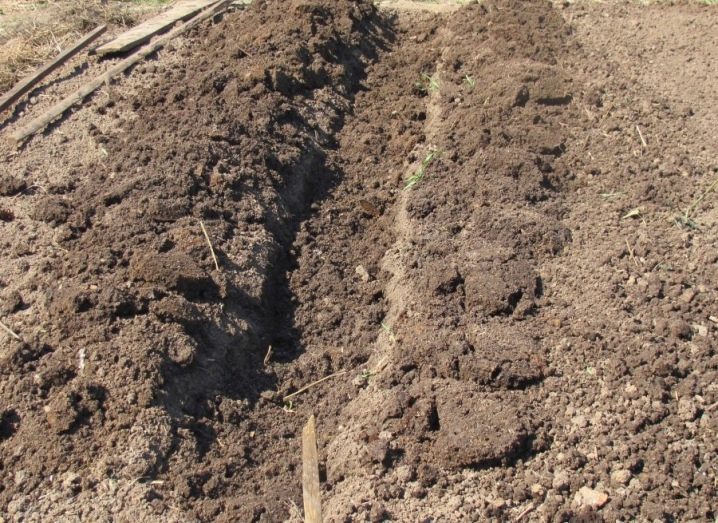
When planting in the soil, tubers are laid out in increments of 0.3 meters. It remains only to cover them with earth. An important advantage of the method is the absence of the need to apply fertilizers, since everything necessary is already fully present in the soil. It is highly recommended to create a layer of mulch in an area up to 7 cm thick to maintain moisture efficiency.
It should be remembered that heavy rainfall increases the risk of rotting future crops in the trenches. The creation of 10-15 cm grooves along the borders will help to neutralize the threat.
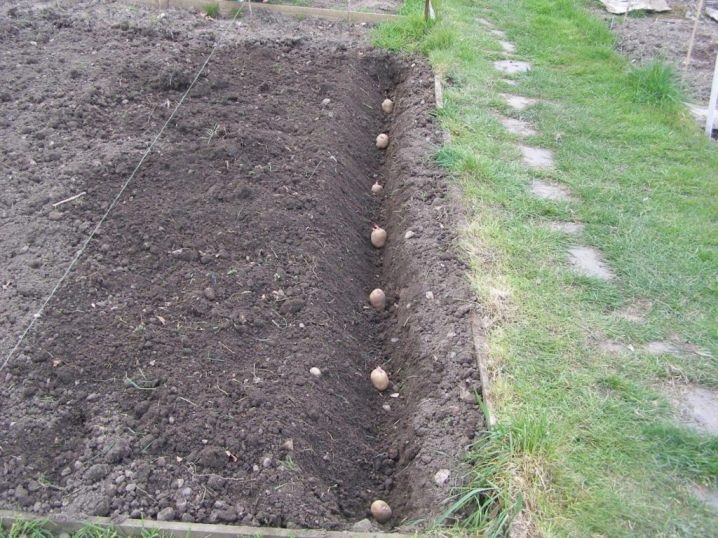
From the same point of view, the indicated gaps between plants should be maintained, which will help prevent excessive planting density.
Double beds
Another popular method of planting potatoes that has proven itself. In this case, the procedure is as simple as possible. With the help of all the same pegs, it is necessary to mark the site, taking into account two key points, namely:
-
the step between adjacent rows within the garden bed is 0.4 m;
-
the interval between such beds is 1.1 m.
Another important point is that the potatoes are placed in holes that are oriented relative to each other like a checkerboard. In this case, from hole to hole within the row should be about 0.3 m. As soon as all the planted tubers sprout, they are sprinkled in order to form the so-called ridge. The width of the latter at the base should be about 1.1 m. As a result, the root system of each plant will receive maximum space for the active formation of the crop.
One of the clear benefits of twin-bed planting is that the rhizomes of all bushes are provided with a maximum of free space, and the greenery - sunlight. With this arrangement of the bushes, a rich and high-quality harvest is guaranteed.
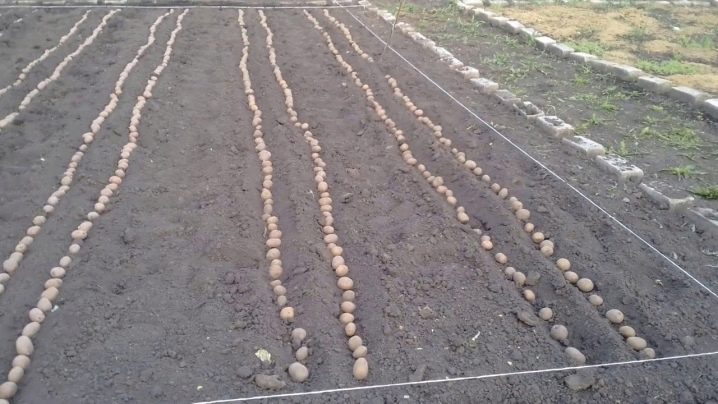
And at the same time, two double beds will occupy the same area on the site as four single beds.
According to the Mittlider method
This famous system has long been proven to be effective and competitive. At the same time, some experienced gardeners believe that when using it, a rather large area is idle. However, practice has proven that potatoes planted according to the Mittlider principle grow in ideal conditions.
According to this planting system, the site must be divided into 45 cm beds. Tubers are planted on them in two rows and in a checkerboard pattern with a distance between adjacent 0.3 m. Another important point is the mandatory formation of sides along the boundaries of the sections. In addition, a fertilizer groove is made in the middle of the bed. The beds themselves are located 0.75-1.1 m from each other.
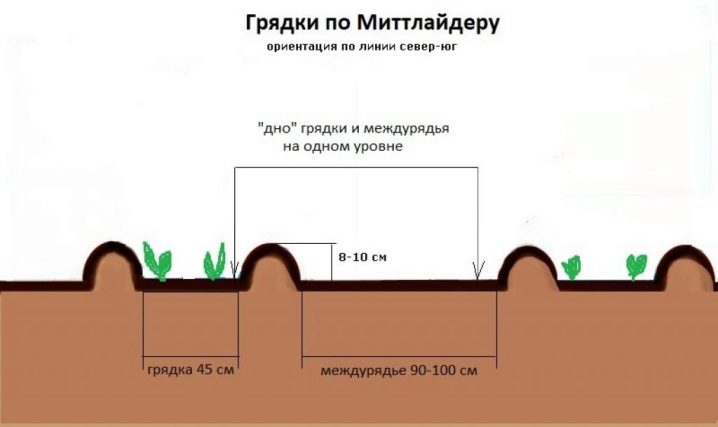













The comment was sent successfully.